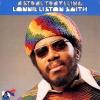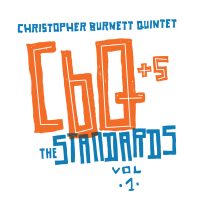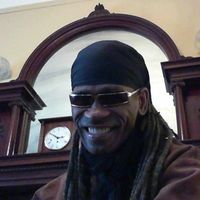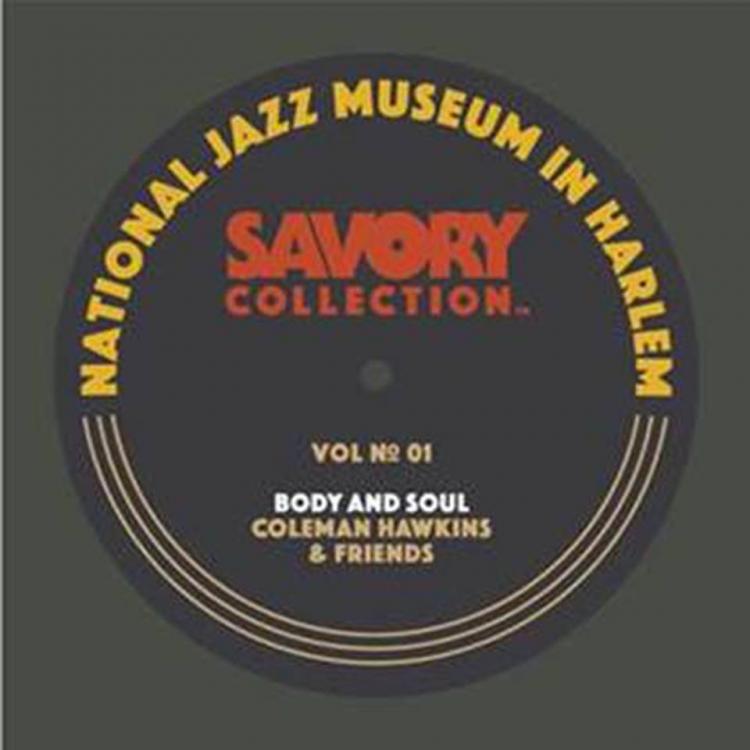Search the Community
Showing results for tags 'jazz'.
-
An email from one shop alerted me that famous Larry Young "Lawrence of Newark" is getting re-released on CD in Japan. It turns out that not only it happens today, but also it's a part of large back-catalog reprint From CD Japan: https://www.cdjapan.co.jp/product/OTLCD-2608?utm_source=MAIL&utm_medium=text-genre&utm_campaign=Jazz-20220405-genre-OTLCD-2608 [PERCEPTION RECORDS] Japan's first full-scale catalog reprint of the independent label <PERCEPTION> established by Jimmy Curtis in 1969 has started! Japan's first CD. The latest digital mastering. Newly written Japanese commentary. Supervision and commentary: Kazunori Harada. If anybody could track down other releases and paste it, that would be great.
-
Good morning to all, Do you guys love Grant Green as I do? Not just him, but all of the players on his records from the 1960's.....absolutely great! This is not a straight up approach to a cover because I certainly made it my own and I left out guitar completely. I just did not think my guitar added anything to the music at this point, but maybe in a later version (I may be doing some alternate versions of this). So Jean De Fleur, yeah super famous jazz composition. I have always loved it. I decided to take it on and see what I could do with it. This music includes drums, bass, piano, electric piano, and trumpet. I dig it. I really want your feedback on this music. What do you think? Leave your comments below. Thanks and have a great day. https://youtu.be/_lNRuH5Fxdw
- 5 replies
-
- grant green
- free jazz
-
(and 3 more)
Tagged with:
-
Hello and good evening. I have been working on this new track for a few days and I have finished it finally and am putting it out here for your feedback. I am personally delighted with it, and I hope you are too! But if not, hey that's okay also! So have a listen and let me know what you think of my jazz! I am the entire quartet. Cheers https://youtu.be/iVX4ANa3F3E
-
Hello again everyone, I am pleased to announce that I am in full production of my first album titled "The Jazz Abstract Project". It falls in the category of "free-jazz" and the music is open to many musical suggestions and expression. I love it! After 25 years of fooling around with only a guitar in hand, I have finally realized where my spot is and I am so on it. I found my groove with this more free form of jazz music. I am also getting some help from a friend who is a sound production expert and he will be lending a hand to help with some final mixing and mastering (later). I recently acquired Birth of the Trumpet and Addictive Drums 2 and I bought the two jazz kits (absolutely fantastic!). So this here is "Dreamscape Stargaze". This link is from Sound Cloud. Hey, I really hope you get my music and also enjoy it too! I tried to make it enjoyable to the listener. Hope I succeeded in that. I began this track with the bass, and built onward from their. I think it's cool and I cannot wait to see what is next. I am doing all of this for fun and for my love for the music, not for money although it would be nice to make some dollars doing this but let's be honest.....who pays people to make jazz these days? Yeah, exactly. https://soundcloud.com/gutiarvegas/dreamscape-stargaze-mixdown
-
Me & my family watched Pixar/Disney's newest release on Disney+ the other night. It's called "Soul". It's a story about a Jazz musician in a fictitious city that looks a lot like New York. The big jazz club is called the Half Note but it looks just like the Village Vanguard, right down to the red awning & red door as well as it being in a basement with a stage backed by red velvet drapes. Herbie Hancock was a consultant on it as the lead character was a pianist. I found a story on the NY Times about how they made it: https://www.nytimes.com/2020/12/25/movies/soul-jazz-animation.html Truth be told, I found it a bit depressing. It's tough for me to discuss why it depressed me without giving away too many spoilers so I'll wait to see if more people see it before doing that. When you see it, you'll have to decide for yourself which side you fall.
-
Hi all- I’m excited to have curated this month’s (August 2020) collection of tracks. I’ve tried my best to include things that I’m currently digging as well as some gems from my past. thanks to Thom Keith for helping me with all the logistics! I hope you guys enjoy the music. http://thomkeith.net/index.php/blindfold-tests/
-
https://news.allaboutjazz.com/saxophonist-christopher-burnett-set-to-release-standards-album-on-arc-label.php Follow the link above to the full article for general details, etc. I'm really happy to complete this project of some of my favorite masterworks.
-
- christopherburnett
- jazz
-
(and 4 more)
Tagged with:
-
We will be leaving our house in the next 18 months (estimation) and we have been here since 1984. We have absorbed my parents stuff, Ann's parents stuff and our own considerable accumulations. I have begun thinning my classical cd collection and am now well over 500 discs. I am looking for suggestions to make this as easy as possible / balanced against getting screwed. Any suggestions from folks going through this sort of thing?
-
Is there appetite for discussion about this? I'm thinking less of the classics (Free Jazz; Ascension) and more about everything after that. These larger ensembles are only sometimes wholly free, otherwise adopt elements of composition, non-standard scoring, various forms of direction, conduction, etc. Busy day here so only time to set down a marker and ask for thoughts and experiences in this area...
-
Hi all, I would like to know what's for you the best "bluesy jazz"? I mean a melancholic jazz who seems like blues. Here are some songs I gathered. I'm looking for stuff like this. Thanks a lot for your recommandations. Freddie Hubbard - Lonely Soul - A Soul Experiment Tony Scott - Blues For Charlie Parker - Born to be Blue Jazz Charles Mingus - Goodbye Pork Pie Hat - Ah Um Art Pepper - The Prisoner - Winter Moon (Remastered) Alif Tree - I Feel Blue - French Cuisine Horace Parlan - Oh So Blue - The Complete Horace Parlan Blue Note Sessions (2000 - Remaster) Jackie McLean - Love And Hate - Destination...Out! Stanley Clarke - Yesterday Princess - Stanley Clarke Kai Winding - Laura - Suspense Themes In Jazz Nicholas Payton;Dr. John;Dianne Reeves - Blues In The Night - Dear Louis Studio Musicians - Blues for the Weepers - Jazz Cabaret Songs Blue Mitchell - Park Avenue Petite - Blue Soul [Keepnews Collection] Donald Byrd - Cristo Redentor - A New Perspective (The Rudy Van Gelder Edition) The Viscounts - Harlem Nocturne - Single Version - Harlem Nocturne Wynton Marsalis - Indelible and Nocturnal - Standard Time Vol. 2: Intimacy Calling Miles Davis - Blue in Green - Kind Of Blue (Legacy Edition) Shelly Manne;And His Men - The Wind - The Vinyl Masters More Swinging Sounds Zoot Sims - Evening in Paris - Zoot Sims avec Henri Renaud et son orchestre Here is the spotify link :
-
The Great African-American Classical Art-Form An interview with the great Jimmy Cobb http://www.nightjourneyrewind.com/home/night-journey-rewind-with-drummer-jimmy-cobb The Great Jimmy Cobb's most famous work is on Miles Davis' Kind of Blue (1959), considered by many to be the quintessential jazz record. Cobb is the last surviving player from the session. Legendary jazz drummer, Jimmy Cobb, was born in Washington, D.C. on January 20, 1929. A superb, mostly self-taught musician, Jimmy is the elder statesman of all the incredible Miles Davis bands. Jimmy’s inspirational work with Miles, John Coltrane, Cannonball Adderly and Co. spanned 1957 until 1963 and included the masterpiece "Kind of Blue", the most popular jazz recording in history. He also played on "Sketches of Spain", Someday My Prince will Come", "Live at Carnegie Hall, "Live at the Blackhawk", "Porgy and Bess", and many, many other watermarks Miles Davis recordings. At 87 Jimmy is still going strong teaching and performing. Set back and enjoy the journey with Jimmy Cobb. A special thanks go out to Rashid Booker for making it happen. Peace Keeping The Idiom Alive Rashid Booker Harlem USA 125th St
-
The Great African-American Classical Art-Form Archie Shepp - How John Coltrane Helped Me, the veteran saxophonist, educator and activist discuss John Coltrane and Albert Ayler https://youtu.be/8rBHG0rvogQ?list=PLqCjLhOxHNnLzDFIHOc0F4E5oT-R-HR1c Negro music and culture are intrinsically improvisational, existential. Nothing is sacred. Archie Shepp – 1990 Archie Shepp was born in Fort Lauderdale, Florida, on May 24th, 1937, but raised in Philadelphia, Pennsylvania, where he studied piano, clarinet, and alto saxophone before focusing on tenor and soprano saxophone. He is best known for his passionately Afro-centric music of the late sixties which focused on highlighting the injustices faced by the African race, as well as for his work with the New York Contemporary Five and his collaborations with his “New Thing” contemporaries, most notably Cecil Taylor and John Coltrane. He studied dramatic literature at Goddard College, earning his degree in 1959. He played alto saxophone in dance bands and sought theatrical work in New York. He also produced plays, among them The Communist in 1965, and Lady Day: A Musical Tragedy in 1972 with trumpeter/composer Cal Massey. — Rashid Booker Keeping The Idiom Alive Harlem USA 125th St Hey! Thanks for stopping by, please like our page and share the content. The Most Influential African-American Cultural Network in the Universe! thejazzaficionado@socialmediastrategiesglobal.net #NowPlaying #MilesDavis #AP #Sothebys #np #TuneIn #Music #Listen #ListenLive #Spotify #Radio #Art #Blues #ArtForm #Luxury #FineArt #RSI #Jazz #Piano #Vinyl #BeBop #HardBop #FreeJazz #PostBop #France #Video #NYC #Berlin #Paris #TheloniousSpereMonk —
-
The Great African-American Classical Art-Form Archie Shepp - How John Coltrane Helped Me, the veteran saxophonist, educator and activist discuss John Coltrane and Albert Ayler https://youtu.be/8rBHG0rvogQ?list=PLqCjLhOxHNnLzDFIHOc0F4E5oT-R-HR1c Negro music and culture are intrinsically improvisational, existential. Nothing is sacred. Archie Shepp – 1990 Archie Shepp was born in Fort Lauderdale, Florida, on May 24th, 1937, but raised in Philadelphia, Pennsylvania, where he studied piano, clarinet, and alto saxophone before focusing on tenor and soprano saxophone. He is best known for his passionately Afro-centric music of the late sixties which focused on highlighting the injustices faced by the African race, as well as for his work with the New York Contemporary Five and his collaborations with his “New Thing” contemporaries, most notably Cecil Taylor and John Coltrane. He studied dramatic literature at Goddard College, earning his degree in 1959. He played alto saxophone in dance bands and sought theatrical work in New York. He also produced plays, among them The Communist in 1965, and Lady Day: A Musical Tragedy in 1972 with trumpeter/composer Cal Massey. — Rashid Booker Keeping The Idiom Alive Harlem USA 125th St Hey! Thanks for stopping by, please like our page and share the content. The Most Influential African-American Cultural Network in the Universe! thejazzaficionado@socialmediastrategiesglobal.net #NowPlaying #MilesDavis #AP #Sothebys #np #TuneIn #Music #Listen #ListenLive #Spotify #Radio #Art #Blues #ArtForm #Luxury #FineArt #RSI #Jazz #Piano #Vinyl #BeBop #HardBop #FreeJazz #PostBop #France #Video #NYC #Berlin #Paris #TheloniousSpereMonk —
-
The Great African-American Classical Art-Form Archie Shepp - How John Coltrane Helped Me, the veteran saxophonist, educator and activist discuss John Coltrane and Albert Ayler https://youtu.be/8rBHG0rvogQ?list=PLqCjLhOxHNnLzDFIHOc0F4E5oT-R-HR1c Negro music and culture are intrinsically improvisational, existential. Nothing is sacred. Archie Shepp – 1990 Archie Shepp was born in Fort Lauderdale, Florida, on May 24th, 1937, but raised in Philadelphia, Pennsylvania, where he studied piano, clarinet, and alto saxophone before focusing on tenor and soprano saxophone. He is best known for his passionately Afro-centric music of the late sixties which focused on highlighting the injustices faced by the African race, as well as for his work with the New York Contemporary Five and his collaborations with his “New Thing” contemporaries, most notably Cecil Taylor and John Coltrane. He studied dramatic literature at Goddard College, earning his degree in 1959. He played alto saxophone in dance bands and sought theatrical work in New York. He also produced plays, among them The Communist in 1965, and Lady Day: A Musical Tragedy in 1972 with trumpeter/composer Cal Massey. — Rashid Booker Keeping The Idiom Alive Harlem USA 125th St Hey! Thanks for stopping by, please like our page and share the content. The Most Influential African-American Cultural Network in the Universe! thejazzaficionado@socialmediastrategiesglobal.net #NowPlaying #MilesDavis #AP #Sothebys #np #TuneIn #Music #Listen #ListenLive #Spotify #Radio #Art #Blues #ArtForm #Luxury #FineArt #RSI #Jazz #Piano #Vinyl #BeBop #HardBop #FreeJazz #PostBop #France #Video #NYC #Berlin #Paris #TheloniousSpereMonk —
-
The Great African-American Classical Art-Form Archie Shepp - How John Coltrane Helped Me, the veteran saxophonist, educator and activist discuss John Coltrane and Albert Ayler https://youtu.be/8rBHG0rvogQ?list=PLqCjLhOxHNnLzDFIHOc0F4E5oT-R-HR1c Negro music and culture are intrinsically improvisational, existential. Nothing is sacred. Archie Shepp – 1990 Archie Shepp was born in Fort Lauderdale, Florida, on May 24th, 1937, but raised in Philadelphia, Pennsylvania, where he studied piano, clarinet, and alto saxophone before focusing on tenor and soprano saxophone. He is best known for his passionately Afro-centric music of the late sixties which focused on highlighting the injustices faced by the African race, as well as for his work with the New York Contemporary Five and his collaborations with his “New Thing” contemporaries, most notably Cecil Taylor and John Coltrane. He studied dramatic literature at Goddard College, earning his degree in 1959. He played alto saxophone in dance bands and sought theatrical work in New York. He also produced plays, among them The Communist in 1965, and Lady Day: A Musical Tragedy in 1972 with trumpeter/composer Cal Massey. — Rashid Booker Keeping The Idiom Alive Harlem USA 125th St Hey! Thanks for stopping by, please like our page and share the content. The Most Influential African-American Cultural Network in the Universe! thejazzaficionado@socialmediastrategiesglobal.net #NowPlaying #MilesDavis #AP #Sothebys #np #TuneIn #Music #Listen #ListenLive #Spotify #Radio #Art #Blues #ArtForm #Luxury #FineArt #RSI #Jazz #Piano #Vinyl #BeBop #HardBop #FreeJazz #PostBop #France #Video #NYC #Berlin #Paris #TheloniousSpereMonk —
-
The Great African-American Classical Art-Form An interview with the great Jimmy Cobb http://www.nightjourneyrewind.com/home/night-journey-rewind-with-drummer-jimmy-cobb The Great Jimmy Cobb's most famous work is on Miles Davis' Kind of Blue (1959), considered by many to be the quintessential jazz record. Cobb is the last surviving player from the session. Legendary jazz drummer, Jimmy Cobb, was born in Washington, D.C. on January 20, 1929. A superb, mostly self-taught musician, Jimmy is the elder statesman of all the incredible Miles Davis bands. Jimmy’s inspirational work with Miles, John Coltrane, Cannonball Adderly and Co. spanned 1957 until 1963 and included the masterpiece "Kind of Blue", the most popular jazz recording in history. He also played on "Sketches of Spain", Someday My Prince will Come", "Live at Carnegie Hall, "Live at the Blackhawk", "Porgy and Bess", and many, many other watermarks Miles Davis recordings. At 87 Jimmy is still going strong teaching and performing. Set back and enjoy the journey with Jimmy Cobb. A special thanks go out to Rashid Booker for making it happen. Peace Keeping The Idiom Alive Rashid Booker Harlem USA 125th St
-
The Great African-American Classical Art-Form “THE SAVORY COLLECTION”, JAZZ’S GREATEST BURIED TREASURE OF NEVER-BEFORE-HEARD RECORDINGS IS BEING RELEASED FOR THE FIRST TIME EXCLUSIVELY ON APPLE MUSIC WITH PRE-ORDER BEGINNING ON SEPTEMBER 23 The National Jazz Museum in Harlem Presents The Savory Collection, Volume 1 - Body and Soul: Coleman Hawkins and Friends To Be Released October 14 (New York, NY) - The National Jazz Museum in Harlem has partnered with Apple Music to exclusively launch The Savory Collection, an extraordinary and unique historical archive featuring swing era jazz artists in their prime, performing inspired and extended performances of never-before-heard material, recorded in superior sound quality. Pre-order kicks off September 23 for the first volume entitled The National Jazz Museum in Harlem Presents The Savory Collection, Volume 1 - Body and Soul: Coleman Hawkins and Friends, featuring first grat track "Body and Soul," by Coleman Hawkins And His Orchestra, which just premiered in the NY Times: http://www.nytimes.com/2016/09/23/arts/music/savory-collection-apple-music-coleman-hawkins.html?rref=collection%2Fsectioncollection%2Farts&action=click&contentCollection=arts®ion=stream&module=stream_unit&version=latest&contentPlacement=5&pgtype=sectionfront . The second grat track, Dinah," a Lionel Hampton Jam Session, will be available October 7. Pre order here: iTunes.com/SavoryCollection and AppleMusic.com/SavoryCollection The collection, which includes 18 stellar tracks recorded between 1936 and 1940 by such artists as Coleman Hawkins, Ella Fitzgerald, Fats Waller, Lionel Hampton, Carl Kress and Emilio Caceres, along with a foreword by noted historian/filmmaker Ken Burns, will be available at Apple Music and iTunes on October 14. It represents a new and significant piece of jazz’s great legacy, with performances by legendary artists from jazz’s golden era. These sounds have never been heard since they were originally broadcast decades ago. These masterpieces come through in brilliantly clear sound – there has never been an archival discovery with this combination of quality and quantity. Loren Schoenberg, Founding Director and Senior Scholar of the National Jazz Museum in Harlem, who says this is a collector’s dream, relentlessly pursued these rumored performances for over 30 years. They were recorded off the air by sound engineer Bill Savory, a technical genius, musician and jazz fan. Schoenberg finally hit pay dirt through Savory’s son Eugene Desavouret, with the discovery of 975 discs and hundreds of hours of music that no one knew about, which the Museum immediately acquired with the goals of restoring the music and making it available to the public. This extraordinary find is comparable to buried treasure in the music world. It is an educational gem, an authentic record of our rich musical heritage and adds new layers to the story of jazz as we know it. Comments Schoenberg : “The Savory Collection is the story of a buried treasure. Imagine finding an unknown play of Shakespeare's or an unknown novel by Mark Twain – that's what this is! It’s is as close to a musical time capsule as you'll ever find - you are right there, in the moment, hearing never-before-heard sounds in truly remarkable fidelity.” The Savory Collection, Volume 1 - Body and Soul: Coleman Hawkins and Friends is a treasure trove of truly remarkable performances by some of the most respected names in jazz, captured in the late 1930’s during the height of the swing era. The extended nightclub and ballroom performances recorded by Savory from radio broadcasts were longer, free-flowing, creatively daring, yet relaxed, as the artists were freed from the limitations and time constraints of a conventional studio recording. Of particular note is Coleman Hawkins’ first live version of “Body and Soul,” clocking in at six minutes with a fresh, well-thought-out performance that is two times the length of the original studio recording, already considered a smash hit in the annals of jazz. It adds a whole new context to what we know about jazz. The superior sound of the tracks makes you feel as if you were in the room, with phenomenal pick up, due to Savory recording from in-studio lines coming directly from the radio networks on professional equipment. Savory also recorded on larger 12” - 16” discs on more durable material and often at the lower speed of 33 1/3, allowing him to record longer performances in their entirety, jam sessions, stretched-out play, and extended solos. He always selected the best performances, understanding their historical value. The caliber of these recordings could never be duplicated in studio. Doug Pomeroy, a Grammy Award-winning audio restoration specialist was brought out of retirement to restore and master the material so that it could be digitally transferred and preserved for generations to come. Pomeroy’s work set up a seamless transition in bridging the past with the digital future. The project was produced by Loren Schoenberg & Ken Druker. Jonathan Scheuer and Daryl Libow serve as executive producers. The Savory Collection, Vol. 2 is expected to be released later this year featuring rare tracks from Count Basie’s band with saxophonist Lester Young that have not been heard since their broadcast in the late 1930’s. Subsequent volumes will follow in 2017. Featuring A Foreword by Noted Historian/Filmmaker Ken Burns. The National Jazz Museum in Harlem selected Apple Music as its exclusive partner because of the brand’s progressive and innovative company culture and consistent advocacy of the creative arts. Apple Music represents artistic diversity in supporting all genres of music and has always offered music fans the best of all possible options. Apple Music is the best choice for a jazz or music fan. TRACK LISTING: COLEMAN HAWKINS AND HIS ORCHESTRA May 17, 1940 Body and Soul Basin Street Blues Lazy Butterfly (Theme) ELLA FITZGERALD August 13, 1938 A-Tisket, A-Tasket I’ve Been Saving Myself for You FATS WALLER AND HIS RHYTHM October 22, 1938 Medley: Yacht Club Swing / Hold My Hand I Haven't Changed a Thing Medley: Summer Souvenirs/Who Blew Out the Flame Medley: You Must Have Been a Beautiful Baby / Sixty Seconds Got Together / I’ve Got a Pocketful of Dreams Alligator Crawl Spider and The Fly LIONEL HAMPTON JAM SESSION December 28, 1938 Dinah Blues Chinatown, My Chinatown Stardust Rosetta CARL KRESS March 29, 1936 Heat Wave EMILIO CACERES TRIO October 19, 1937 China Boy The National Jazz Museum in Harlem, a Smithsonian Affiliate, is a 501(c)3 charitable organization. It is a thriving center for jazz that stimulates hearts and minds, and reaches out to diverse audiences to enjoy this quintessential American music. The idea for the Museum originated in 1997 with Leonard Garment, Counsel to two U.S. Presidents, and an accomplished jazz saxophonist. Board member Abraham D. Sofaer, a former U.S. District Judge, gave an initial gift in honor of his brother-in-law Richard J. Scheuer, Jr. A congressional appropriation in 2000 and funds from the Upper Manhattan Empowerment Zone have also been critical to sustaining the Museum. The Museum’s mission is to preserve, promote and present jazz by inspiring knowledge, appreciation and the celebration of jazz locally, nationally and internationally. Jonathan Batiste and Christian McBride are Co-Artistic Directors of the Museum, which is currently located in the heart of Harlem at 58 West 129th St. For more information, please visit www.jazzmuseuminharlem.org. Contact: Karen Sundell 310/854-8167 ksundell@rogersandcowan.com Lori Lousararian-Hakola 310/351-0110 llousararian@rogersandcowan.com KAREN SUNDELL / VP Music – Entertainment 8687 Melrose Avenue|7th Floor |Los Angeles, CA 90069 T: 310.854.8167 | C: 310.738.6564 — with Rashid Booker in New York, New York. Hey! Thanks for stopping by, please like our page and share the content. The Most Influential African-American Cultural Network in the Universe! thejazzaficionado@socialmediastrategiesglobal.net #NowPlaying #MilesDavis #AP #Sothebys #np #TuneIn #Music #Listen #ListenLive #Spotify#Radio #Art #Blues #ArtForm #Luxury #FineArt #RSI #Jazz #Piano #Vinyl#BeBop #HardBop #FreeJazz #PostBop #France #Video #NYC #Berlin #Paris #TheloniousSpereMonk — Keeping The Idiom Alive Rashid Booker Harlem USA 125th St —
-
The Great African-American Classical Art-Form The Cultural Psychodynamics of Racism Consider those nightclubs such as the Cotton Club where performers were black but the clientele was exclusively white. Why did all those white people seek black entertainment? No doubt most of them came for the erotic floor show, but some of them were interested in the music. Why? The question is not a new one and the answer is obvious -- in the same way that the applicability of Freud to racism is so obvious that it has been little discussed. European-Americans have liked African-American music because it has expressive values which are lacking in European and European-American music (Crouch, 1990b, p.83; Keil, 1996, p.49; Small, 1987, p.154; Williams, 1983, p.254). In particular, as we've seen above, African-American music is comfortable with sexuality, while European music is not. People may have come to the Cotton Club to see black bodies enact jungle pseudo-rituals on stage, but they left with the expressive sound of African-American music boring into their brains. While the jazz club is ostensibly a place for entertainment, it also functions on a deeper level as a school, one in which the teachers are black and the students are white. They are learning a cultural stylization of emotion which is adequate to their needs than the one they learned at home, in school, or in the church. Where the lyncher and his descendants are desperately trying to preserve the restrictiveness of his culture, the white jazz devotee, and his descendants, is trying to break free from that restrictiveness by learning elements of a different culture. In the nightclub scenario, Africa is the teacher and Europe the student (cf. Asante, 1987, p.59). Source Harvard Press: Benzon, W.L., 1997. Music Making History: Africa Meets Europe in the United States of the Blues. https://www.facebook.com/keepingtheidiomalive/
-
The Great African-American Classical Art-Form John Coltrane [Playlist] https://open.spotify.com/user/121809214/playlist/0ajpP4rBTuOyHISyHIxz5e Curtis Fuller & John Coltrane at Coltrane's "Blue Train" session of September 15. 1957 at the Van Gelder Studio, Hackensack, New Jersey. Image Credit Mosaic Images. John William Coltrane, also known as "Trane" (September 23, 1926 – July 17, 1967), was an African-American saxophonist-composer. Working in the bebop and hard bop idioms early in his career, Coltrane helped pioneer the use of modes in so-called jazz and was later at the forefront of the so-called free jazz idiom. He led at least fifty recording sessions during his career and appeared as a sideman on many sessions by other musicians, including trumpeter-composer Miles Davis and pianist-composer Thelonious Monk. Coltrane is not nearly as popular a figure in African American poetry as he was in the 1960s, although he still is written about often. And he is certainly revered, although black intellectuals and writers tend to revere all dead black so-called jazz artists. Coltrane, though, is a bit more revered than most. Probably only Billie Holiday generates as much sentimentality as Coltrane. It will be interesting to see how newer generations of black writers will perceive Coltrane and the tradition of writing about him that came of age in the 1960s, how they make use of that tradition. Coltrane is certainly likely to remain a subject as long as his music endures. And the persistence of his music seems very likely. The Black Perspective in Music, the primary purpose of The Black Perspective in Music is to provide an opportunity for the free expression of ideas and opinions by persons interested in the African-American and African performing arts, particularly from the creative point of view. Regular features include articles by musicologists, ethnomusicologists, historians, composers, and performing artists; interviews with well-known personalities in the arts; listings of new books, music, musicals, films, and recordings; announcements of special events (festivals, conferences, premiere performances, symposia), and periodic surveys of bibliographic materials. The Black Perspective in Music was published by the Foundation for Research in the African-American Creative Arts. Early, Gerald. "Ode to John Coltrane: A Jazz Musician's Influence on African American Culture." The Antioch Review 57.3 (1999): 371-85. Web. Subjects: African American Studies, Area Studies, Music, Arts — Rashid Booker Keeping The Idiom Alive Harlem USA 125th St Hey! Thanks for stopping by, please like our page and share the content. The Most Influential African-American Cultural Network in the Universe!https://www.facebook.com/keepingtheidiomalive/photos/a.855915101129032.1073741841.584459258274619/1035400639847143/?type=3&theater
- 15 replies
-
- africanamericanclassicalartform
- socalledjazz
-
(and 3 more)
Tagged with:
-
The Great African-American Classical Art-Form An interview with the great Jimmy Cobb https://www.facebook.com/keepingtheidiomalive/photos/rpd.100002234540944/1052537581466782/?type=3&theater The Great Jimmy Cobb's most famous work is on Miles Davis' Kind of Blue (1959), considered by many to be the quintessential jazz record. Cobb is the last surviving player from the session. Legendary jazz drummer, Jimmy Cobb, was born in Washington, D.C. on January 20, 1929. A superb, mostly self-taught musician, Jimmy is the elder statesman of all the incredible Miles Davis bands. Jimmy’s inspirational work with Miles, John Coltrane, Cannonball Adderly and Co. spanned 1957 until 1963 and included the masterpiece "Kind of Blue", the most popular jazz recording in history. He also played on "Sketches of Spain", Someday My Prince will Come", "Live at Carnegie Hall, "Live at the Blackhawk", "Porgy and Bess", and many, many other watermarks Miles Davis recordings. At 87 Jimmy is still going strong teaching and performing. Set back and enjoy the journey with Jimmy Cobb. A special thanks go out to Rashid Booker for making it happen. Peace Hey! Thanks for stopping by, please like our page and share the content. The Most Influential African-American Cultural Network in the Universe! Keeping The Idiom Alive Rashid Booker Harlem USA 125th St
-
- aficnamericanclassicalartform
- socalledjazz
-
(and 5 more)
Tagged with:
-
The Great African-American Classical Art-Form An interview with the great Jimmy Cobb http://www.nightjourneyrewind.com/home/night-journey-rewind-with-drummer-jimmy-cobb The Great Jimmy Cobb's most famous work is on Miles Davis' Kind of Blue (1959), considered by many to be the quintessential jazz record. Cobb is the last surviving player from the session. Legendary jazz drummer, Jimmy Cobb, was born in Washington, D.C. on January 20, 1929. A superb, mostly self-taught musician, Jimmy is the elder statesman of all the incredible Miles Davis bands. Jimmy’s inspirational work with Miles, John Coltrane, Cannonball Adderly and Co. spanned 1957 until 1963 and included the masterpiece "Kind of Blue", the most popular jazz recording in history. He also played on "Sketches of Spain", Someday My Prince will Come", "Live at Carnegie Hall, "Live at the Blackhawk", "Porgy and Bess", and many, many other watermarks Miles Davis recordings. At 87 Jimmy is still going strong teaching and performing. Set back and enjoy the journey with Jimmy Cobb. A special thanks go out to Rashid Booker for making it happen. Peace Hey! Thanks for stopping by, please like our page and share the content. The Most Influential African-American Cultural Network in the Universe! thejazzaficionado@socialmediastrategiesglobal.net #NowPlaying #MilesDavis #AP #Sothebys #np #TuneIn #Music #Listen #ListenLive #Spotify #Radio #Art #Blues #ArtForm #Luxury #FineArt #RSI #Jazz #Piano #Vinyl #BeBop #HardBop #FreeJazz #PostBop #France #Video #NYC #Berlin #Paris #TheloniousSpereMonk — Keeping The Idiom Alive Rashid Booker Harlem USA 125th St http://www.nightjourneyrewind.com/home/night-journey-rewind-with-drummer-jimmy-cobb
-
I used to try to never miss Gil Noble's Like it Is. It was amazing the criticism of U.S. policies towards blacks, and third world peoples generally that were allowed to get past the ABC suits. I guess the 'dead' non-prime-time slot (Sundays at noon) didn't hurt his case. I've also enjoyed interviews with Sonny Rollins, and Jackie McLean. A show from 1972 on Charlie Parker won, I believe, a Grammy or other award. (Unfortunately, I could not locate these). I met Mr. Noble once, in 1995, and he was very warm and gracious. Here is a Like it Is broadcast about the true origins and importance of jazz, from slavery times on up: 'Like It Is' w/ Gil Noble - Jazz: The American Art Form YOUTUBE.COM
-
I have many pre-recorded 10" reels for sale (15 IPS). Lots of rare jazz and blues and a some BBC concerts. email me for a play list. burrows1@cablerocket.com
-
Report on or recommend any exhibitions that relate to jazz. I've been to the 'I Got Rhythm' exhibition in Stuttgart/Germany Three floors of paintings, album covers, object art, videos. You get an electronic guide (included in the 12€ ticket price) which plays music, speaks and/or displays texts. Will be on until 6th March 2016 Catalogue is German/English kunstmuseum-stuttgart.de (not sure if there's an English version of the website) admins please delete link if that's a no-go
-
Some cool stuff here! https://soundcloud.com/roberto-gs-elevator-jazz/4am-contento-jazz-2015
_forumlogo.png.a607ef20a6e0c299ab2aa6443aa1f32e.png)









